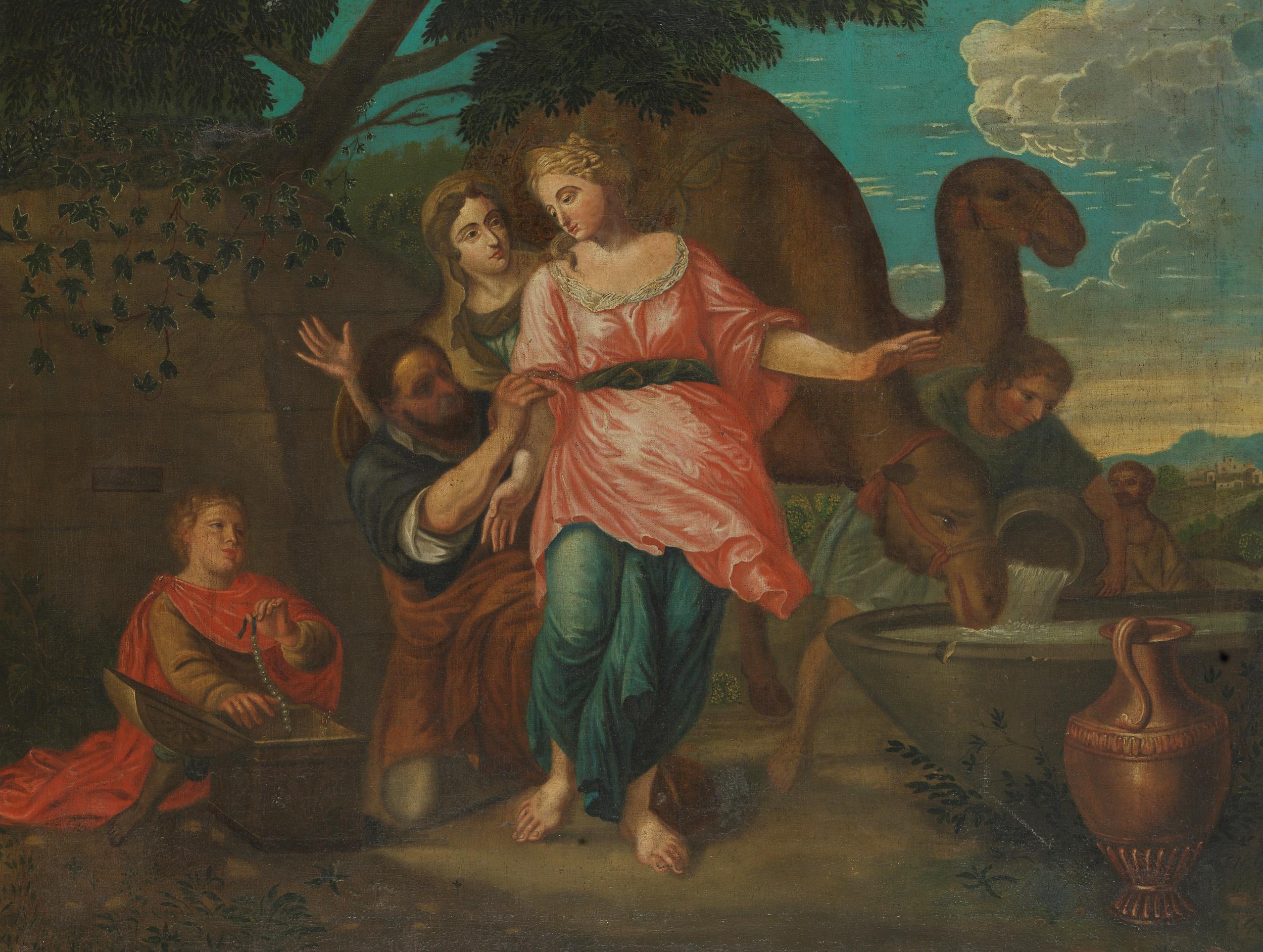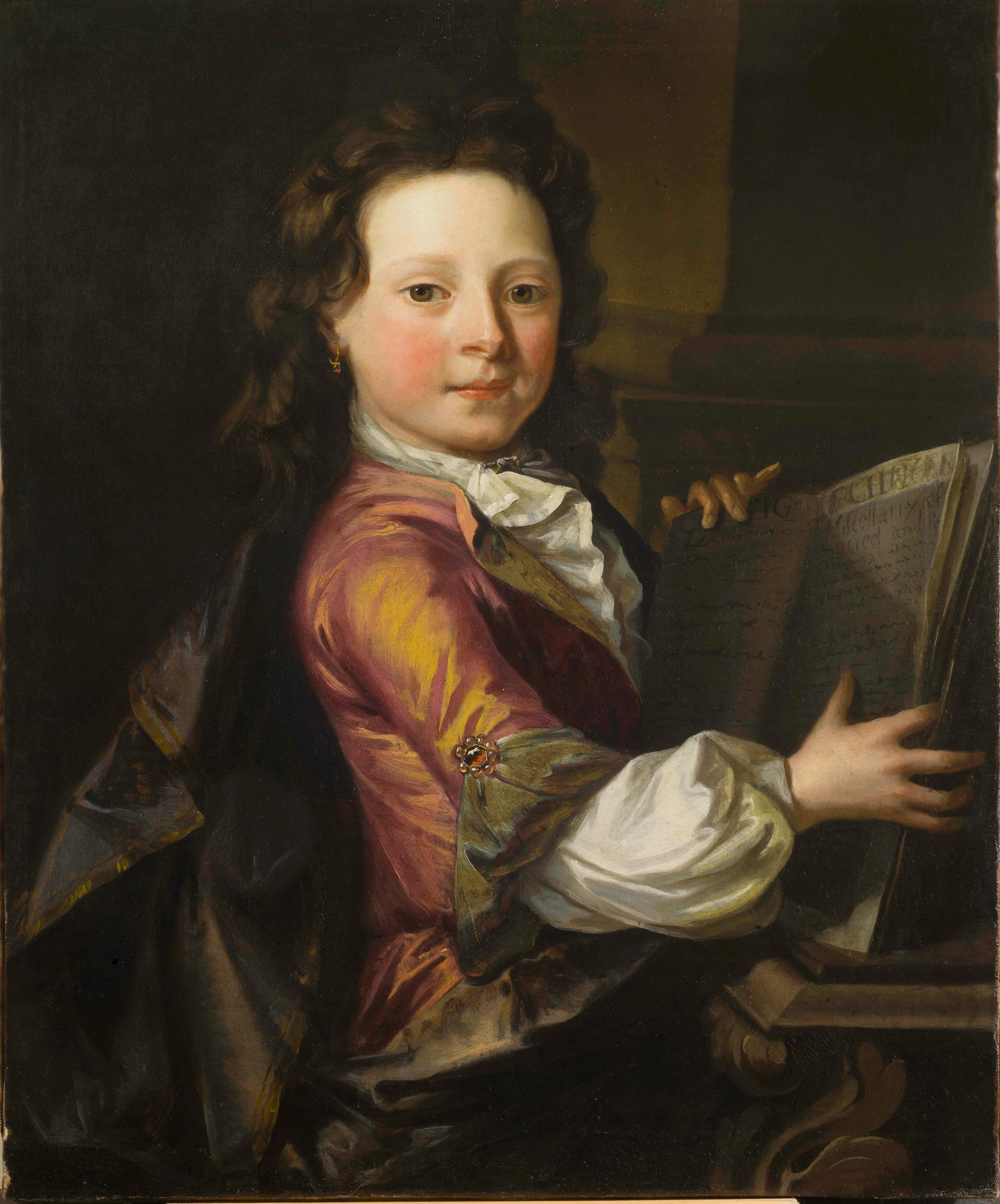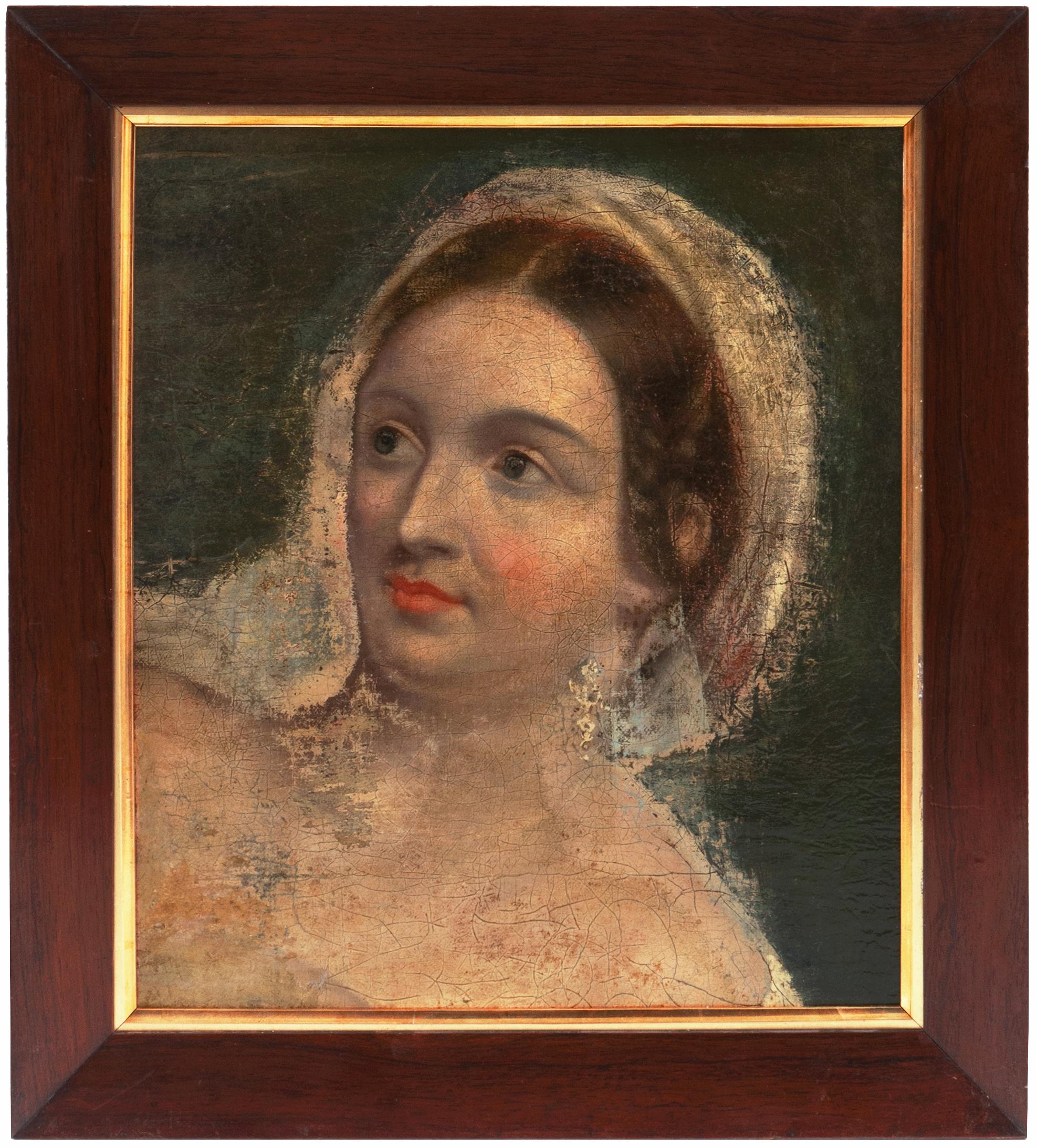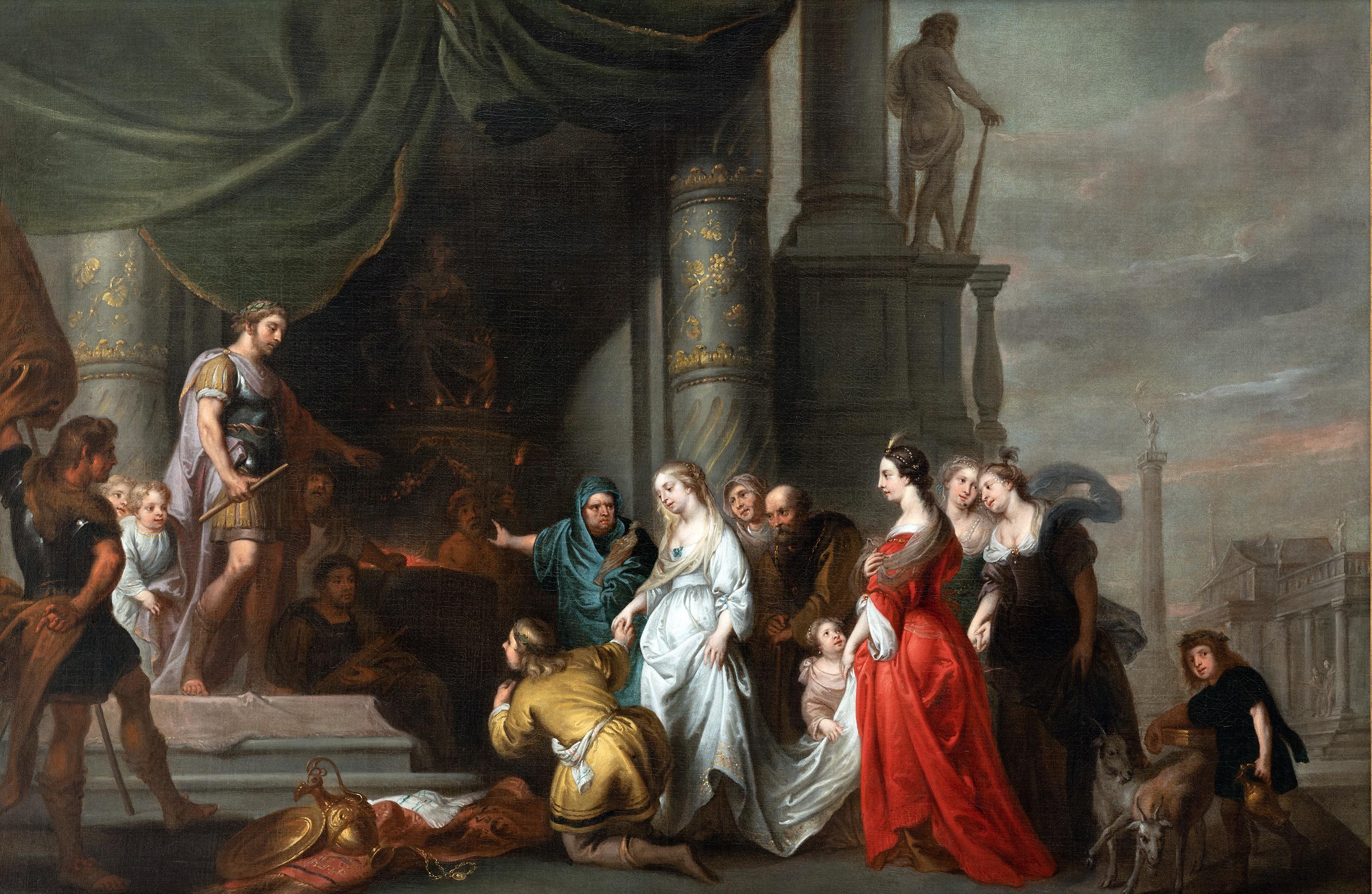Items Similar to 16th C, Biblical, Manner of Joos van Cleve, Madonna with Child, Oil on Panel
Want more images or videos?
Request additional images or videos from the seller
1 of 11
16th C, Biblical, Manner of Joos van Cleve, Madonna with Child, Oil on PanelUnknown
Unknown
About the Item
Attentive observer, may I challenge you to find some unusual elements in this panel painting? One detail has to do with the symbolic use of color, the other with a later adjustment of the image. Indeed! The Blessed Virgin is not dressed in her usual sky blue cloak, which refers to her purity, but in a red robe.
During the Late Middle Ages and early Renaissance, the Virgin often wore such a red garment to refer to the Passion of Christ. After all, the blessing Christ child with his orb would shed his blood for the redemption of mankind. The second strange element catches the eye when one looks closer at the little Jesus. It appears that he was originally depicted completely naked, but got on a transparent loincloth over time. In the past there were several times when nudity in art was subject to some form of censorship. For example, the supervision of Christian art was strongly encouraged by the Council of Trent (1545-1563). This assembly was dealing with the inner-ecclesiastical reform of the Roman Catholic Church. One of the important theologians who followed the council’s guidelines was Joannes Molanus (1533-1585). He did not consider the nakedness of the Christ Child to be edifying and pointed out that children could be endangered in this way. He may have been referring to the dangers of paedophilia.
During the 19th century, puritanism emerged. A famous example of a moral preacher was Pope Pius IX. In 1857 he had the genitals cut off from all male nude sculptures in the Vatican. Afterwards the damage was covered up by adding plaster fig leaves. Why was no evil seen in the nakedness of the Christ Child before the Council of Trent? Well, at the time, the focus was apparently primarily on Christian doctrine itself. The nakedness of the Christ Child was considered referring to the incarnation of God. In the body of Jezus, God’s spiritual entity became tangible.
- Attributed to:Joos van Cleve (1475 - 1541, Dutch)
- Creation Year:Unknown
- Dimensions:Height: 50.79 in (129 cm)Width: 38.59 in (98 cm)Depth: 3.35 in (8.5 cm)
- Medium:
- Movement & Style:
- Period:
- Condition:
- Gallery Location:brussel, BE
- Reference Number:
About the Seller
5.0
Vetted Seller
These experienced sellers undergo a comprehensive evaluation by our team of in-house experts.
1stDibs seller since 2021
14 sales on 1stDibs
- ShippingRetrieving quote...Ships From: brussel, Belgium
- Return PolicyA return for this item may be initiated within 3 days of delivery.
More From This SellerView All
- 18th C, In the Style of the Classicizing Baroque, Biblical, Rebekka and EliëzerLocated in brussel, BEWillem Muys was a Dutch, 18th-century painter of history pieces, portraits and cabinet pieces. Above all, he appears to have been active as a painter of ‘wallpaper’. Until the mid-18th century, ‘wallpaper’ was not painted on paper but on coarsely woven linen. Wealthy citizens had their mansions or country estates adorned with ‘wallpaper’ with landscapes, exotic birds or chinoiseries. Willem Muys mainly painted ‘wallpaper’, which means that few of his works have been preserved. They are hardly represented in public collections. The works of his sons, Nicolaas en Robbert, both painters, are a little less rare. The painting with Rebecca and Eliezer...Category
18th Century Baroque Figurative Paintings
MaterialsCanvas, Oil
- 17th C., Baroque, Genre Painting, Stop of the TravelersLocated in brussel, BEAs the Dutch painter Philips Wouwerman often did, this artist painted travellers stopping at an inn or a farm. One of the men got off his horse to urinate against the facade of the building. The motif of a peeing man was far from an exception in Dutch genre paintings...Category
17th Century Baroque Figurative Paintings
MaterialsOil, Canvas
- 17th C painting of a peasant couple preparing for Carnival.Flemish School.Located in brussel, BEPreparation for Carnival: a three day festival of insatiable eating, drinking and carousing that preceded the forty days of Lent, a period of penitence when the pious drank only wate...Category
17th Century Baroque Figurative Paintings
MaterialsOil, Wood Panel
- Farming Family on a Sunday Morning, Oil on Canvas. Framed and SignedLocated in brussel, BEThe Namur painter and engraver, Louis Decoeur (1884-1960) became a member of “L’Effort” around 1910. This artist’s association provided a free studio for painters in Brussels, on the...Category
20th Century Fauvist Figurative Paintings
MaterialsCanvas, Oil
- Expressionism, Animal Painting, Auzoux's Troglodytes Gorilla's, Oil on Canvas.Located in brussel, BEAround the middle of the 19th century, the missionary Thomas Savage and the anatomist Jeffries Wyman described a new animal species – the Troglodytes Gorilla – in their Boston Societ...Category
21st Century and Contemporary Expressionist Animal Paintings
MaterialsCanvas, Oil
- Portrait of a Gentleman in Three-Quarter-LengthLocated in brussel, BEThe 39-year-old gentleman had himself portrayed as an aristocrat in an idyllic landscape. At the time, parks and forests were environments associated with the lands and pastimes of t...Category
17th Century Dutch School Portrait Paintings
MaterialsCanvas, Oil
You May Also Like
- Portrait of a Boy, John Closterman, Large English Portrait Art, Old MasterBy John ClostermanLocated in Greven, DEJohn Clostermann (Osnabrück 1660 - 1711 London) Portrait of a boy, maybe Charles Hinde Oil on canvas, 61 x 74,6 cm John Closterman (also Klosterman) was a portrait painter of the late 17th and early 18th centuries. He primarily portrayed English noblemen and European aristocratic families. His father was already an artist and he trained his son. In 1679 he went to Paris and studied with Francois de Troy. In 1681 he was in London and worked for the artist John Riley, whose studio he took over after his death. In 1696 he was invited to the Spanish court...Category
17th Century Baroque Figurative Paintings
MaterialsCanvas, Oil
- 'Rebekah at the Well', Follower of Luca Giordano, Early 19th Century Figural OilLocated in Santa Cruz, CAAn early 19th century, figural oil of a young woman with chestnut hair, shown wearing a headscarf and glancing towards the viewers left. A detail from a copy of 'Rebeca at the Well',...Category
19th Century Baroque Portrait Paintings
MaterialsCanvas, Masonite, Oil
- G Negri called Il Boccia Baroque Figurative Painting 17th century oil canvasBy Girolamo Negri called Il BocciaLocated in Florence, ITOil on canvas, 62 x 51 cm (without the frame) Even if on the background there is an attribution to “Francesco Gessi pupil of Guido Reni” by the bolognese art historian Guido Zucchini (dated 1945), recent studies are tending to add it to the corpus of Girolamo Negri called Il Boccia (Bologna 1648-1718) due to lots of similarities with his style (the pale and warm palette chosen, the profile) The painting represents a lady on profile wearing a brown turban, a yellow clock...Category
Late 17th Century Baroque Figurative Paintings
MaterialsCanvas, Oil
- Ritratto figurativo maschile scuola toscana del XVII secolo olio su telaLocated in Florence, ITDipinto di scuola toscana della seconda metà del XVII secolo raffigurante un ritratto maschile di tre quarti, immerso nell'eleganza e nella maestosità proprie dell'epoca. La figura è...Category
Late 17th Century Baroque Portrait Paintings
MaterialsCanvas, Oil
- Continence of Scipio, Erasmus Quellinus, School Rubens, Baroque Art, Old MasterBy Erasmus Quellinus the YoungerLocated in Greven, DEErasmus Quellinus The Continence of Scipio Oil on Canvas The painting is included in the Catalogue Raisonné of the artist. The Roman commande...Category
17th Century Baroque Figurative Paintings
MaterialsOil, Canvas
- Saint Bartholomew, Old Master, Oil Print, Ribera, Figurative Art, Spanish ArtBy Jusepe de RiberaLocated in Greven, DEOld Master An Oil Print after a Painting by Jusepe de Ribera in the Museo del Prado, Spain. This is an early print after the original.Category
20th Century Baroque Figurative Prints
MaterialsOil, Canvas





